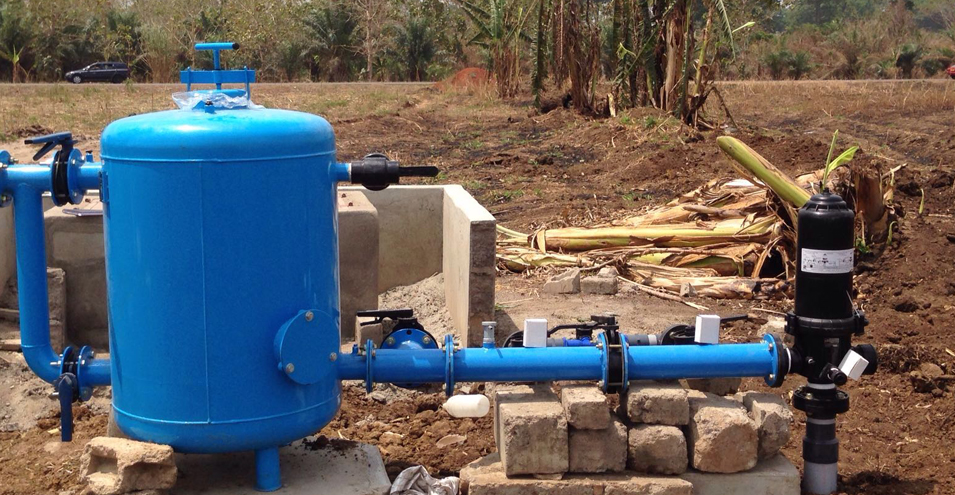Fertilizer Tank

This fertilizer tank has been designed and manufactured to achieve the highest standards of quality and finish.
This fertilizer tank applies fertilizer to the quantitative principle.
For best results, the fertilizer tank must be correctly installed and properly operated.
Special attention must be given to draining and cleaning the tank and to appropriate maintenance.
Fertilizing can be performed continuously during irrigation or controlled (by controller or computer) as required, or manually operated.
Irrigation with fertilizer is generally recommended during the first two-thirds of irrigation time. This ensures proper flushing of the irrigation systems and minimizes the clogging of the emitters by the chemicals.
Installation
- Install the fertilizer tank in place.
- Connect the fertilizer tank in place.
- Connect the fertilizer head (combination valve) (52) after the main valve of the water supply line/pipe.
- Connect the inlet and outlet (5) flexible hoses (½”) to the fertilizer head.
- A pressure relief valve must be inserted before the fertilizer “head” if pressure is not controlled effectively.
- Maximal operational pressure should not exceed 8 bar (120 psi).
- Fertilizer tank designed to withstand a maximum pressure of 10 bar (150 psi).
Operation
Irrigation can be performed in one of two ways:
1. Irrigation without fertilizer:
- Close valves (53), (54) then
- Open valve (52)
2. Irrigation with fertilizer:
- Fill the tank with the required fertilizer through the top filling port (50). The maximum level should not exceed 2/3 of the tank height.
- Close the filling port (50) with the cover (3) and tightening bracket (2) and tighten properly with handle (1).
- Rinse thoroughly with clean water externally.
- Verify drain plug (11) is closed.
- Open main valve, then partially open the fertilizing head valve (52).
- Open inlet (53) and outlet (54) valves completely.
- Regulate the fertilizer head valve (52), according to the required fertilizing times (see table), and measure pressure loss between A and B by inserting pressure gauge with needle into pressure testing ports (A,B).
Specification
Approximate Fertilizing Times (Hours)
| Pressure Loss Inlet/Outlet (bar) (psi) |
Tank Capacity | ||||
| 60 Litters 16 U.s. Gallons | 90 Litters 24 U.s. Gallons | 120 Litters 32 U.s. Gallons | 220 Litters 58 U.s. Gallons | ||
| (1) | (2) | (3) | (4) | (5) | |
| 0.05 | 0.7 | 1 – 1⅟4 | 1¾ – 2 | 2 – 2½ | 3¾ – 4½ |
| 0.1 | 1.5 | ¾ – 1 | 1⅟4 – 1½ | 1½ – 2 | 2½ – 2¾ |
| 0.2 | 3 | ½ – ¾ | ¾ – 1 | 1 – 1½ | 1¾ – 2⅟4 |
| 0.4 | 6 | ⅓ – ½ | ½ – ¾ | ¾ – 1⅟4 | 1⅟4 – 1½ |
The fertilizing times are for general use only, and for fertilizers easily soluble in water.
Actual times may be altered according to field conditions.
Column 1: indicates the pressure difference between inlet A and outlet B of the fertilizer head.
Columns 2 – 5: Indicate the time in hours, of fertilizing (until concentration becomes negligible).
Usually, fertilizing times are determined according to the type of fertilizer, crops, and experience.
NOTE:
The fertilizing time is determined by the pressure loss.
Periodic Cleaning
Clean the tank end of fertigation and before storage.
Cleaning the Tank
- Verify that outlet valve (54) and fertilizer head (52) are tightly closed.
- Open drain plug (11) (*).
- Open inlet valve (53) and main valve, and let the water flow rinse the tank (*).
- Rinse thoroughly with clean water the interior of the tank and make sure no fertilizer remains inside.
- Rinse thoroughly with clean water the exterior of the tank and make sure there are no remains of fertilizer.
- The small tanks (models 6005, 6010, of 5, 10 litters) have no drain plug and can be rinsed under a tap or with separate hose.
Maintenance
- Apply a layer of grease to the thread of the handle (1), once a year.
- Any damage to the protective coating must be repaired without delay. Prior to the application of the protective paint, clean thoroughly the damaged spot with wire brush.


